Pawscessories is reader-supported. When you buy via links on our site, we may earn an affiliate commission at no cost to you.
Learn more.
If you’ve found a dried dead tick on your dog, the first thing you need to do is take a deep breath.
It’s not the end of the world, and with the right information, you can handle the situation like a pro.
Ticks, both alive and dead, can cause a lot of anxiety in dog owners.
But it’s important to remember that not all ticks carry disease. In fact, the vast majority of ticks are harmless to both humans and animals.
In addition, dried dead ticks found on dogs are far less of a threat than live ones since they are very unlikely to transmit any disease.
When I reached out to my father Dr. Littlejohn, who has been a practicing vet for over 40 years, he said if your dog is on tick medication there is almost no reason to be concerned.
In addition, he also mentioned that many people misidentify ticks and particularly ones that can transmit diseases.
All in all, 99/100 times if you find a dried dead tick on your dog, there’s no need to panic.
That said, there are a few things you should do if you find a dried dead tick on your dog.
In this article, you’ll discover all you need to know about dead ticks, how to properly handle them, remove them, and keep your pet safe from them moving forward.
Table of Contents
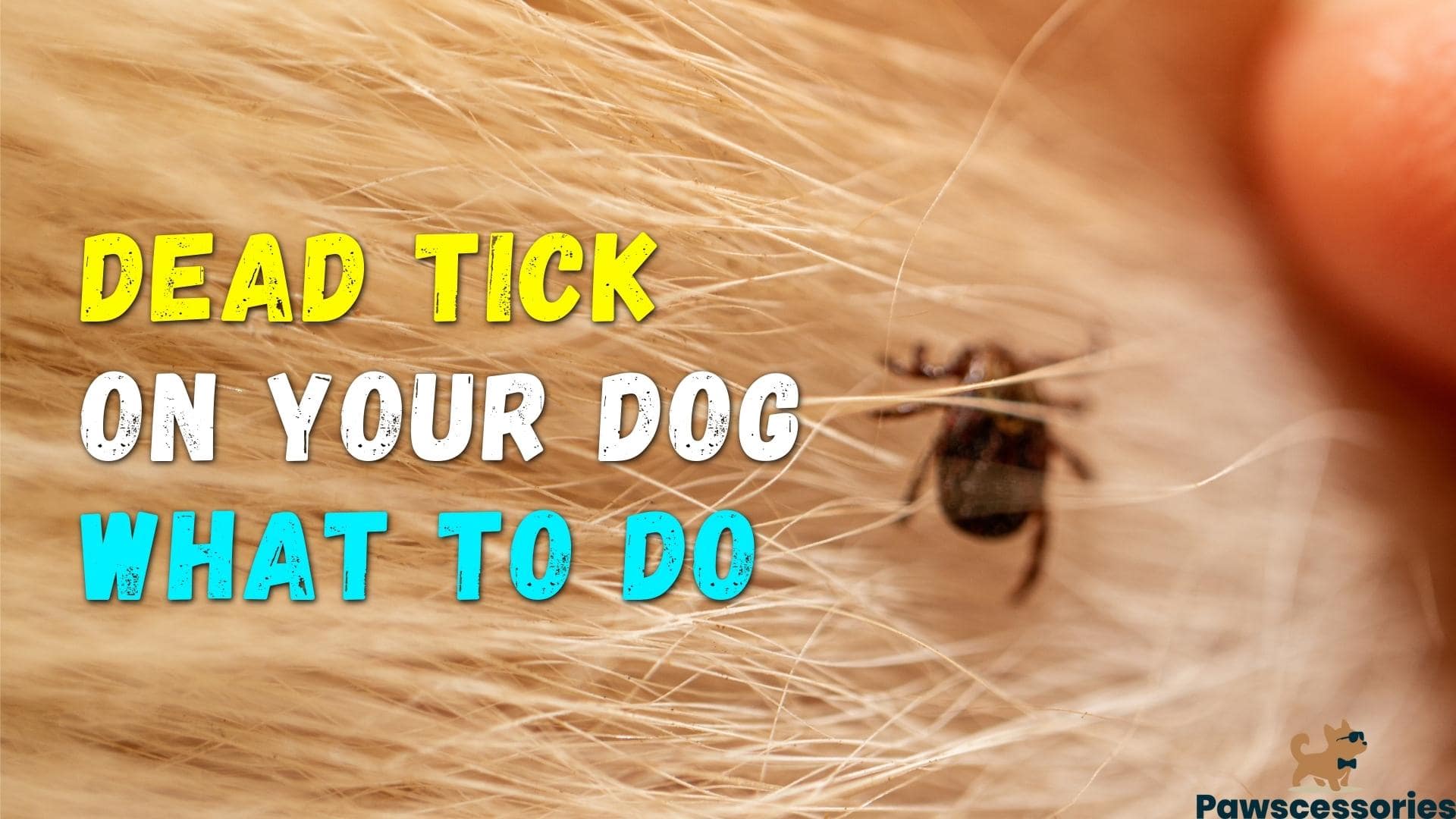
How To Identify A Tick On Your Dog’s Skin
Ticks are often mistaken for other things like fleas, a skin tag, moles, scabs, or dried blood.
They can be brown, black, or red and range in size from a poppy seed to a raisin.
The easiest way to identify a tick on your dog is to look for the tell-tale “body.”
This is the part of the tick that’s attached to your dog’s skin and looks like a small, dark-colored bump.
When you rub your fingers along your dog’s skin a tick will feel like a little bump.
If you’re still not sure, you can always take a photo of the bump and show it to your vet.
They’ll be able to tell you for sure if it’s a tick or something else.
Ticks usually attach themselves to the skin around your dog’s head, neck, or ears.
But they can also attach themselves to other parts of the body like the chest, back, or legs.
How Can You Tell If A Tick Is Dead?
The easiest way to tell if a tick is dead is by looking at it. A dried dead tick will be flat and dried out.
They can also range in color from brown to black. If the tick is alive, it will be plump and filled with blood.
Another way to tell if a tick is dead is by looking at the legs. If the tick is alive, all of its legs will be moving.
If it’s dead, the legs will be dried up, shriveled, and not moving. It may even appear almost flat.
Take a good few minutes to check it out and you should be able to determine if it’s truly dead.
Are Dried Dead Ticks Dangerous When Attached To Dogs?
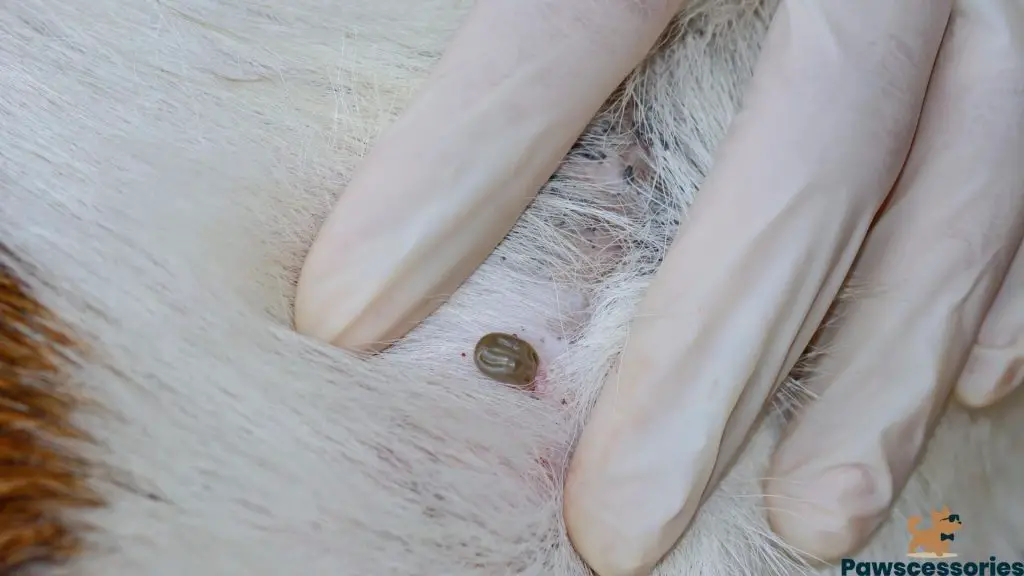
There are 2 main dangers when it comes to a dead tick on a dog’s body.
#1 Tick-Borne Diseases
When a tick bites your dog the biggest danger is a tick-borne disease being passed to your dog.
However, tick-borne diseases only come from certain tick species that are infected with the bacteria that cause the disease.
And if you are wondering, yes even an attached dead ticks can transmit these to your dog. However, its extremely unlikely.
The most common tick-borne diseases in dogs are:
- Lyme Disease – Comes from black-legged ticks or deer tick
- Rocky Mountain Spotted Fever – Comes from brown dog tick and American dog tick
- Canine Ehrlichiosis Lyme Disease – Comes from a number of ticks including Lone Star tick, American dog tick, brown dog tick
- Canine Anaplasmosis
- Protozoal Diseases
- Canine Babesiosis
- Canine Hepatozoonosis
Tick disease transmission only occurs if the tick is alive and attached to your dog for at least 12-24 hours.
So, if you find a dried dead tick on your dog, there’s no need to worry about these diseases being transmitted.
The only time you need to be concerned is if the dried dead tick was attached to your dog for an extended period of time before it died.
If that’s the case, then there’s a small chance your dog could have contracted a tick-borne disease.
The best thing to do in this situation is to take your dog to the vet and have them checked out.
They’ll be able to run some tests and determine if your dog has a tick-borne disease or not.
#2 Infection
The second danger of a dried dead tick on your dog is them getting an infection.
Ticks can leave behind mouthparts when they detach from the skin and these can become infected.
The best way to prevent infection is to remove the dried dead tick as soon as possible.
Once removed it’s important to properly clean your dog’s skin to also avoid infection.
If you find a dried dead tick on your dog, follow the removal instructions below.
Why Would A Tick Attached To A Dog Be Dead?
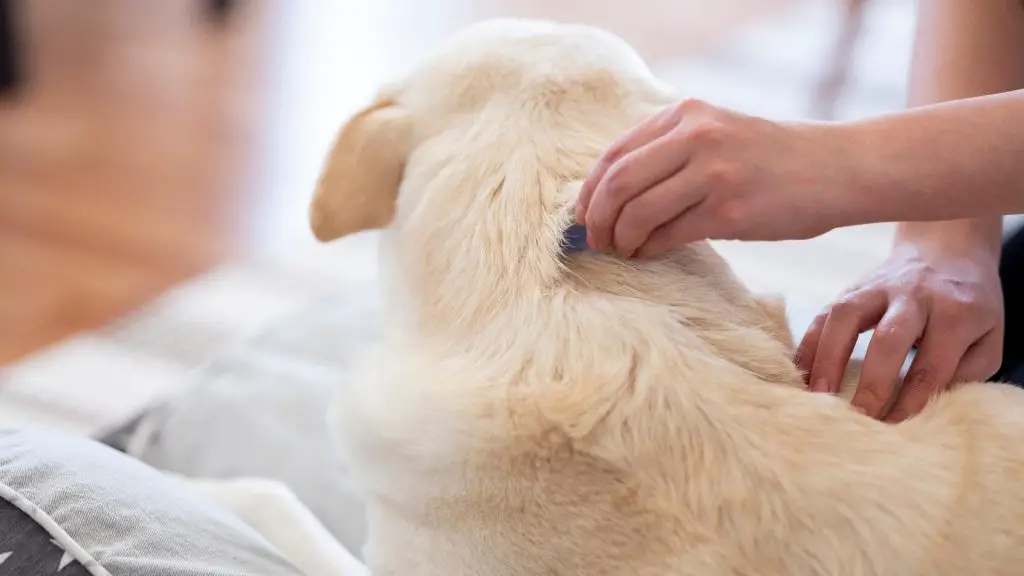
There are a few reasons why you might find a dried dead tick on your dog’s skin.
Tick Prevention Medication
The most common reason is that the tick attached to your dog then died.
This can happen from flea and tick medications.
Some examples of these medications are Frontline or Seresto. These oral medications are designed to kill the ticks before any diseases can transmit into your dog’s system.
However, this medication does not prevent the tick from latching onto your dog.
Therefore, a tick can attach to your dog for 5-10 minutes before dying from the medication.
Your Dog Killed The Tick Or Repellent Did
Another reason a dead tick could be attached to your dog is that it died from repellent or by physical force from your dog.
Tick repellents usually contain chemicals that kill ticks. If you’ve recently sprayed your dog with a tick repellent, then it’s likely that’s why the dried dead tick is on your dog’s skin.
Lastly, it’s possible that your dog simply killed the tick.
Dogs will often itch, scratch, and bite at their skin when they have a tick. If they’re able to get it in the right spot they can kill the tick.
What Happens If A Tick Dies On A Dog?
If a tick dies on your dog, it’s not the end of the world.
The dried dead tick will eventually fall off on its own or you can remove it, which is recommended (instructions below).
The biggest concern is if the dried dead tick was attached to your dog for an extended period of time before it died.
In this case, there’s a chance your dog could have contracted a tick-borne disease if the tick species that was attached was a carrier.
If your dog does not take any tick preventative medication the best thing to do is take your dog to the vet and have them checked out.
They’ll be able to run some tests and determine if your dog has contracted a tick-borne disease or not.
Can A Tick Be Dead And Still Attached?
The short answer is yes.
Ticks can be dead and still attached to your dog. This happens because ticks have sharp teeth that latch on.
If a tick is attached to a dog and then dies, the tick’s mouthparts can still be embedded in your dog’s skin.
In fact, they can be more difficult to remove when they die while still being attached.
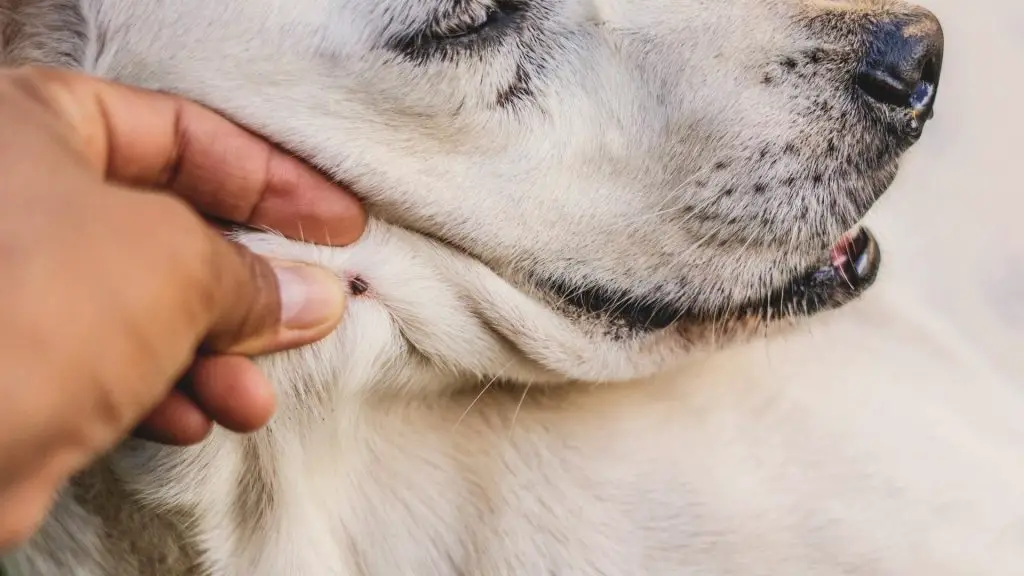
Will Dead Ticks Fall Off Dog?
Dried dead ticks will eventually fall off your dog on their own. This process can take a few days to weeks.
However, in some cases, a dead tick might be even harder to detach from the skin than ones that are alive.
This is because when a tick is alive over time its grip loosens as they become full of blood and grows bigger.
On the flip side, when a tick is dead its sharp teeth stay latched in place even though its body is shrinking and shriveling.
As a result, the skin surrounding the tick’s head can tighten due to the tick’s smaller body size.
Thus, making it harder to remove the tick.
It’s also possible for the dried dead tick to become stuck in your dog’s fur, preventing it from fulling falling off.
Are Ticks Dead When They Fall Off?
Ticks do not die right away after falling off.
In fact, they can live for a few days to weeks without a host.
This depends on which stage of their life they are in.
Female ticks that have fallen off will often lay their eggs before dying.
As for male ticks, they will usually find another host and mate with a female tick before dying.
However, some species of ticks like the brown dog tick can live for months after detachment.
To conclude, most ticks that fall off won’t be dead right away. Instead, they will likely continue to look to complete their life goals of mating or laying eggs in the female’s case.
I Found A Dried Dead Tick On My Dog’s skin! Should I Remove It?
You should always look to remove a tick when found on your dog.
Ticks can be uncomfortable for your dog, even if they’re dried and dead.
A dried dead tick can cause your dog to itch and scratch the affected area. It can be irritating and even lead to infection if not removed properly.
The best way to remove a dried dead tick is with a pair of fine-tipped tweezers.
You’ll want to grab the tick as close to the skin as possible and pull it straight up with a steady motion.
More detailed information on removing a tick is below.
How Do I Remove A Dried Dead Tick From My Dog?
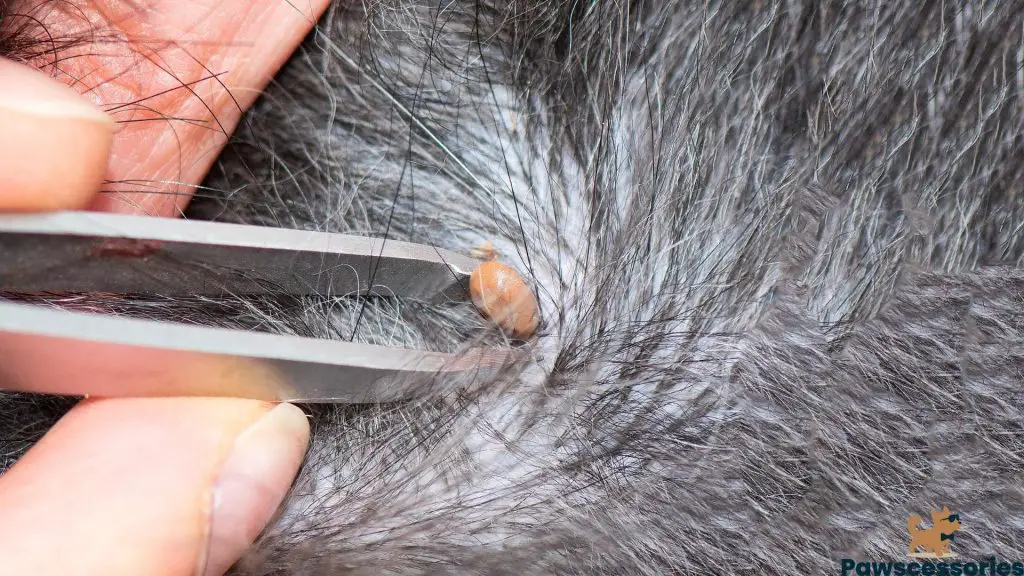
Removing a dead embedded tick from your dog’s skin is just like removing a tick that’s alive.
So you are just applying the same principles here.
Here are some step-by-step instructions to remove the dead tick from your dog.
Step 1 – Get the proper tools needed for the removal of the tick
To remove ticks, you’ll want to get the appropriate tools needed for the job.
- Grab yourself a pair of fine-tipped tweezers
- A pair of gloves
- Cotton balls or q-tips
- 70% rubbing alcohol or hydrogen peroxide (this will be our antiseptic cleaning tool)
- Paper towel
- Option: If you have a tick-removal kit you can grab that and it should contain everything you need
Step 2 – Remove the tick using tweezers or a special tick removal tool
When you locate the tick it’s time to remove this sucker from your dog.
Throw on your gloves and grab your tweezers.
Next, you’ll want to use your hand without the tweezers to spread your dog’s hair out of the way.
You want to have a clear opening to the tick without any hair in the way.
This is so you avoid ripping out your dog’s hair along with the tick.
If you are struggling with this get someone to help you.
Next, get your pointy tweezers and get as close to the dog’s skin as possible while grabbing the body of the tick.
Here’s an image to give you a visual.
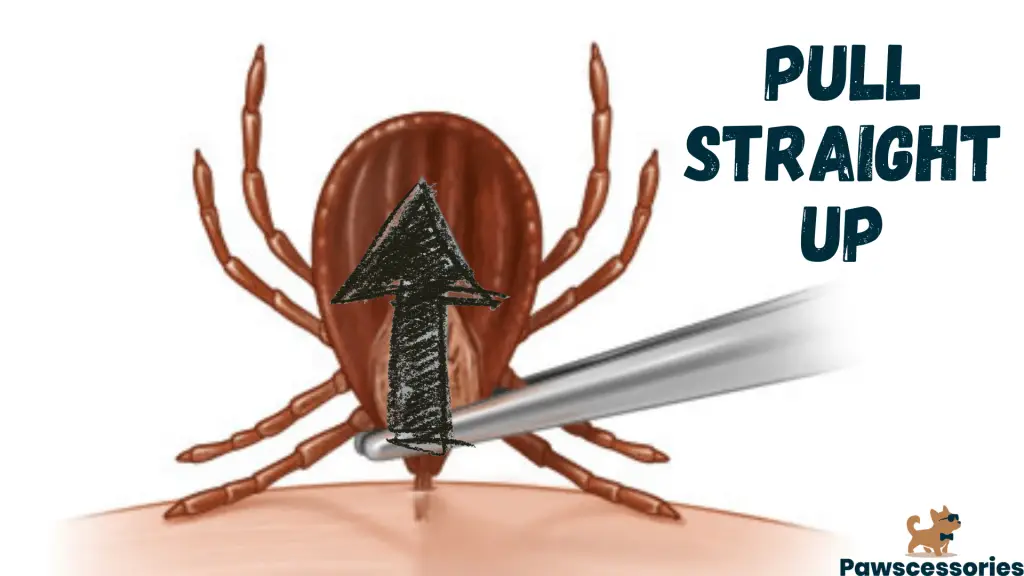
You want to grip this firmly but you don’t want to crush the tick’s body while removing it.
Once you have a good firm grip, pull the tick straight up with a steady motion.
Do not twist or jerk the tick as this can cause its mouthparts to break off and stay in your dog’s skin.
If this does end up happening don’t worry, just remove the mouthparts with the tweezers and proceed to the next step.
Also, a piece of skin may come off with the tick.
Again, don’t worry about this, it happens and is completely normal. Just proceed to the next step.
Step 3 – Clean and disinfect your dog’s skin on and around the tick bite
Now that the tick is finally out it’s time to clean and disinfect your dog’s skin.
We will be using 70% rubbing alcohol or hydrogen peroxide for this.
Soak a cotton ball or Q-tip in either one of these solutions and apply it to the area where the tick was embedded.
You want to make sure you are getting on and around the bite as well.
Let this sit for a few minutes.
If your dog’s skin seems irritated, red, or sore, you can use an ointment like Neosporin to relieve the bite area.
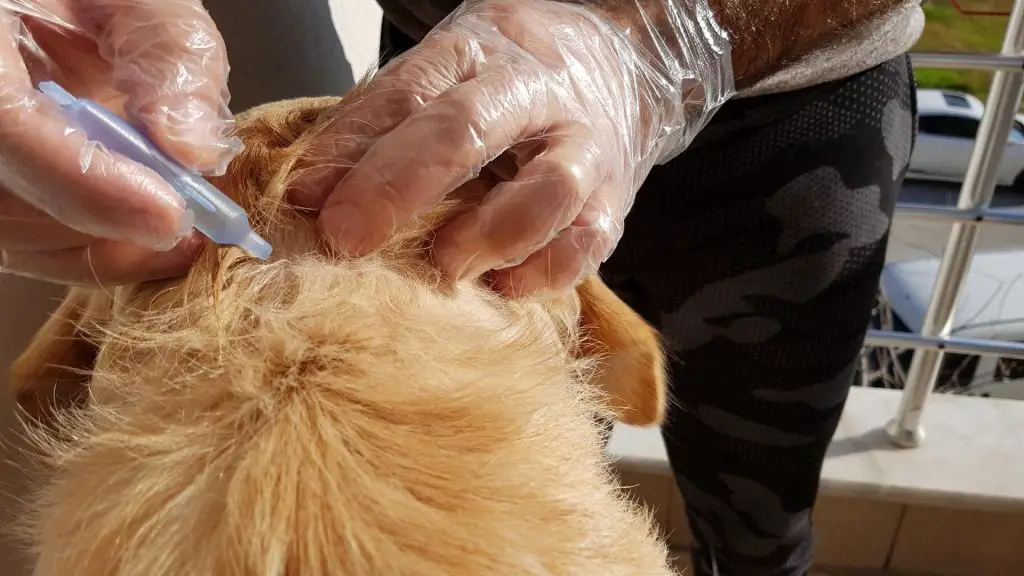
Step 4 – Place dried dead tick into a container or bag
The CDC says to never crush a tick with your fingers and to dispose of it properly.
Place the dried dead tick into a container or bag and then throw it away.
You can also flush the tick down the toilet or wrap it in tape before tossing it out.
Step 5 – Make sure it remains clean and uninfected
For the next little while make sure to check back on this area to make sure no infections occur.
If you notice a rash or any strange symptoms from your dog several weeks after removing the tick check in with your vet.
Make sure you tell them about the tick incident when you see them.
What Happens If You Don’t Remove A Tick Properly?
If you don’t remove the tick properly there is a chance that its mouthparts can stay embedded in your dog’s skin.
Don’t worry though, this isn’t as common as you might think.
If this does happen and you can see the mouthparts still in your dog’s skin, grab a pair of tweezers and try to remove them.
You can also use a needle with rubbing alcohol to gently widen the hole where the head is stuck.
In the same way, you would try to remove a pesky splinter.
If you can’t seem to get them out or if they appear to be buried too deep, you should see your vet.
You usually want to avoid leaving it in your dog’s skin, but, a tick head can eventually come out on its own.
Is It Normal For A Dog To Have A Bump After Removing A Tick?
Yes, it is normal for your dog to have a small bump after removing a tick.
This is because when the tick feeds it releases saliva which can cause an allergic reaction in some dogs.
The good news is that this bump will go away on its own within a few days.
In addition, sometimes when removing ticks you take a piece of their skin out with the tick. This can leave behind a bump.
If you are concerned about the size of the bump or if it seems to be getting worse, check-in with your vet.
Is It Normal To See A Scab After A Tick Bite On Dogs?
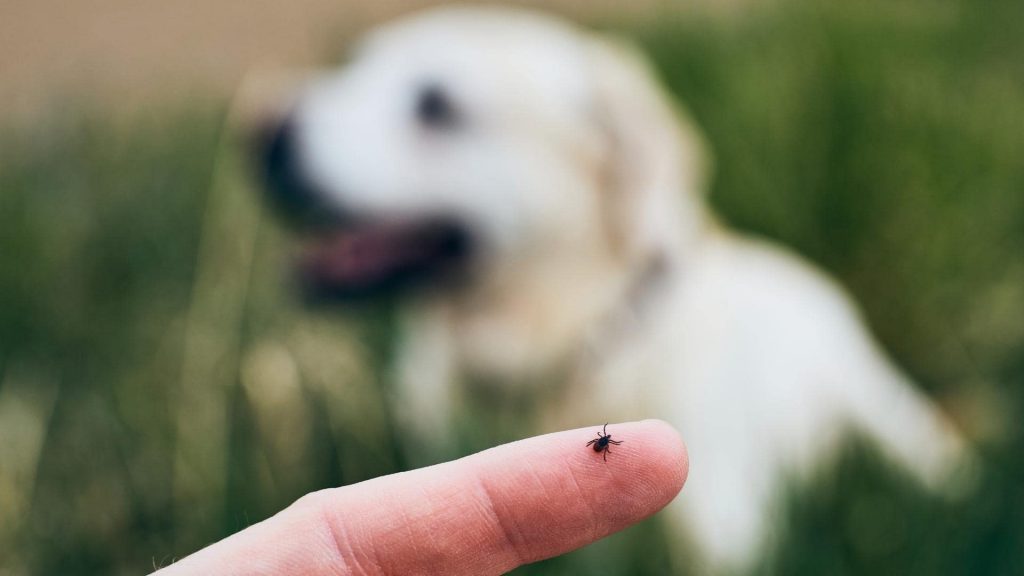
Yes, it is normal to see a scab form after a tick bite on dogs.
The scab is just dried blood and usually nothing to worry about.
Not the mention the tick bit a hole in your dog’s skin, so scabbing is needed for healing.
Sometimes a piece of your dog’s skin will get ripped out with the tick which can make scabbing more intense.
If the scab seems to be getting bigger or if it won’t go away after a few weeks, check in with your vet.
Should You Take Your Dog To The Vet After Removing A Tick?
You don’t necessarily need to take your dog to the vet after removing a tick.
However, if this is your dog’s first time getting a tick or you are unsure about the removal process it is always best to err on the side of caution and bring them in.
In addition, if you notice any strange symptoms or reactions after removing the tick check in with your vet.
It is always best to be safe rather than sorry when it comes to ticks and your dog.
How Do You Keep Ticks Off Of Dogs?
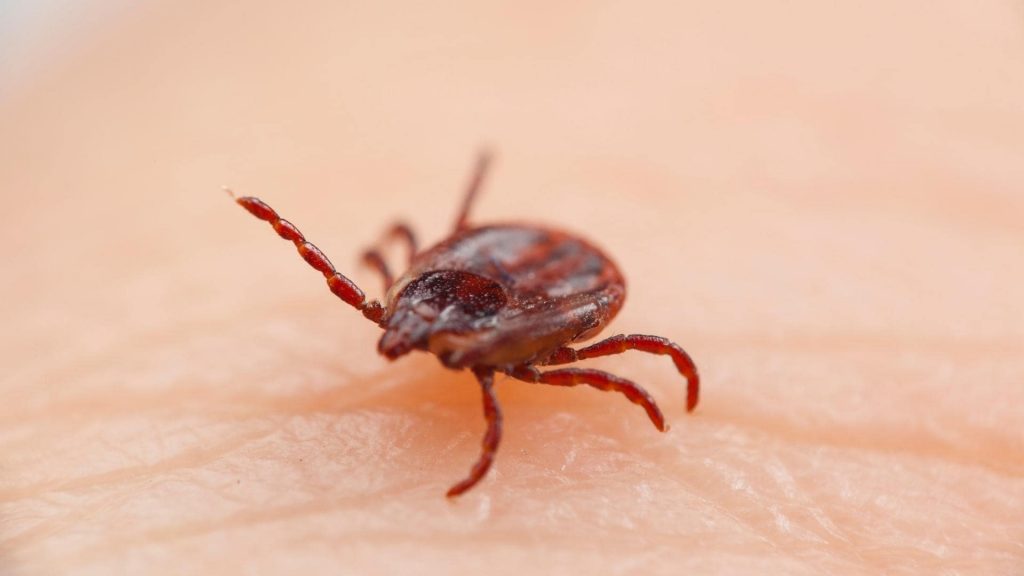
The best way to keep ticks off of dogs is to use a tick preventative.
There are many different kinds of tick preventatives on the market today.
Talk to your vet about which one would be best for your dog based on their size, age, and health.
In addition to using a tick preventative, you should also check your dog for ticks after being in areas where they are known to live.
This includes tall grass, woods, or anywhere else with a lot of vegetation.
Ticks are more active in the spring and summer months but can be found all year long in some areas.
By taking these precautions you can help to keep your dog safe from ticks and the diseases they carry.
What Are The Signs Of Lyme Disease?
Lyme disease is a serious illness that can be transmitted to humans and dogs by infected ticks.
The good news is that it is preventable with tick prevention medication.
When speaking with Dr. Littlejohn, he mentioned that most owners catch Lyme disease when they first notice neurological symptoms.
It is normally from noticing their dogs struggling to walk properly.
Some of the common signs of Lyme disease in dogs include:
- Fever
- Loss of appetite/anorexia
- Lameness
- Swollen joints
- Kidney problems
- Neurological problems
- Lethargy/fatigue
- Swollen lymph nodes
- Diarrhea
- Vomiting
- Seizures
- Blood in the urine
If you notice any of these signs in your dog, it is important to take them to the vet right away.
Lyme disease can be treated with antibiotics but the sooner it is caught the better.
Unfortunately, it’s extremely hard to detect in the early stages which is why it is so important to be proactive about tick prevention.
Final Thoughts
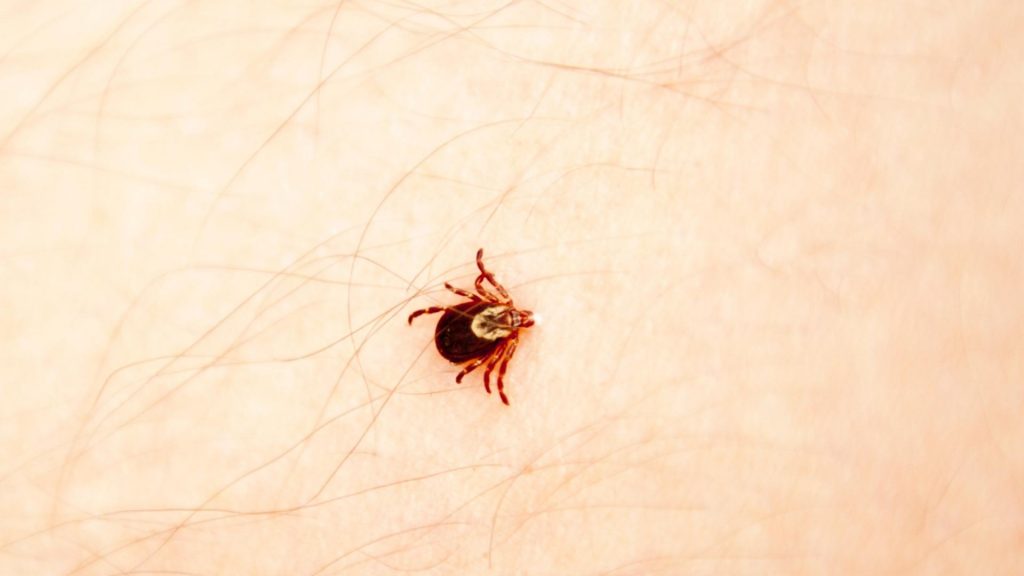
If you happen to come across a dried dead tick on your dog remove it as soon as possible.
Though it’s dead, it’s still quite bothersome for dogs and could potentially still transmit tick-borne diseases (though very rare).
If you are unsure about how to remove it, or if this is your dog’s first time getting a tick, the best thing to do is bring them to the vet.
They can help to remove the tick and also check for any signs of disease.
In addition, be sure to use tick prevention medication year-round in order to keep your dog safe from ticks and the diseases they carry.
By taking these precautions you can help ensure that your dog stays healthy and happy for years to come.
Other posts you might find interesting:
Ingrown Dog Whisker: Causes, Treatment, & Prevention (Vet Answers)
